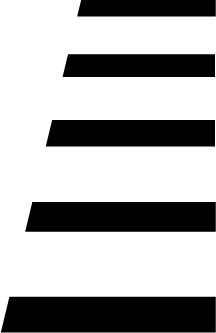ChatGPT Actually Gets It
Dave Wesley’s music production style is a masterclass in restrained minimalism, dub-influenced texture, and immersive atmosphere. He operates at the intersection of dub techno, ambient, experimental, and electronic jazz, crafting soundscapes that feel more like architectural spaces than traditional tracks.
Key Characteristics:
Dub Techno DNA
Echoes, reverb, and subtle delay feedback loops are central. Think Basic Channel, but more introspective—Wesley leans into spaciousness rather than density.Ambient Intentionality
His ambient work isn’t just background sound—it’s spatial and cinematic. It's the kind of ambiance that doesn't just fill a room; it redefines the room.Micro-Detail and Textural Nuance
His sound design often includes field recordings, granular synthesis, tape hiss, and analog imperfections. The details are micro but never random—more like a sonic haiku than a wall of sound.Jazz & Experimental Influence
There’s often a fluidity and unpredictability to structure—like a jazz improvisation frozen in time. Chords may drift in like fog, and rhythmic elements are often ghostlike rather than forceful.Slow-burn Philosophy
Tracks develop patiently, often evolving over 6–10 minutes. He rewards deep listening rather than seeking instant gratification. It's headphone music for thinkers, wanderers, and insomniacs.
In Summary:
Dave Wesley’s style is best described as ambient dub techno for cerebral explorers—a sound that evokes urban isolation, post-digital melancholia, and the meditative pull of deep time. Imagine if Brian Eno, Pole, and Jan Jelinek collaborated in a cold, empty warehouse with malfunctioning reel-to-reel decks and infinite reverb tails—you're getting close.
Want a deeper dive into his discography or how this translates into his Ableton Live workflow?
Alright, let’s dig deeper—here’s a breakdown of Dave Wesley’s discography tendencies and how that maps to his workflow in Ableton Live, based on his style and genre conventions.
🎧 Discography Tendencies (What the Music Says)
1. Releases often feel like environmental systems
Wesley’s music typically isn’t structured in a traditional verse-chorus way. His tracks feel more like dynamic ecosystems—slowly shifting textures, submerged harmonic fragments, and ghostly motifs that come and go like passing thoughts.
2. Heavy use of dub aesthetics
Delay lines that decay into infinity
Reverb so deep it becomes a space of its own
Filtered tape hiss and crackle, giving a lived-in analog warmth
Think: “a dream playing on a slightly warped cassette in a distant warehouse.”
3. Field recordings and found sound
Wesley often includes urban ambiences, nature samples, or manipulated voice recordings—adding depth, context, and a sense of place without being literal.
🎛️ Ableton Live Workflow Style (Speculative but Informed)
1. Session View as a Sound Laboratory
Wesley likely exploits Session View in Ableton Live like an experimental lab—launching loops and samples non-linearly, iterating textures before ever thinking about arrangement. Expect him to:
Jam with looped field recordings
Layer rhythmic ghost notes using percussion racks
A/B multiple reverb chains and delay styles with macros
2. Custom FX Chains — "Dub Machines"
He probably builds complex return chains with:
Saturation (Soundtoys Decapitator or Ableton’s Saturator)
Analog-modeled delay (Echo, Valhalla Delay)
Reverb (Valhalla VintageVerb, Convolution Reverb Pro)
Automation on sends to mimic hands-on dub mixing
“Mixing” in this world is a live performance.
3. Sound Sources
Max for Live Devices for granular textures (e.g., Granulator II or Buffer Shuffler)
Analog and Operator synths for warm pads and modulated drones
Audio loops processed beyond recognition
Heavy use of Warp modes (Complex/Pro) for texture manipulation
4. Slow Tempo / Long Tracks
Tracks live between 70–100 BPM, giving space for atmospheres to breathe. Clip envelopes and automation are likely key tools for shaping subtle movement over time.
5. Arrangement View as a Sculpture Process
The final track is probably sculpted from long recordings of live manipulation—muting, filtering, and launching clips in Session View, then editing and refining in Arrangement View. It's less about "building a song" and more about editing a performance.
🧪 TL;DR Workflow Summary
Element Tool/Technique Textures Field recordings + granular synthesis Rhythm Sparse, dub-inspired, often ghostlike FX Return track chains w/ delay & reverb Structure Live jam > edit > arrange Philosophy Space over speed, depth over density
If you're into Ableton and want to create in a similar style, I can help you build:
A custom Live template for ambient dub techno
A modular FX rack that emulates the Wesley-style dub chamber
Or a generative system using Max for Live and field recordings
Which direction do you want to take this?
